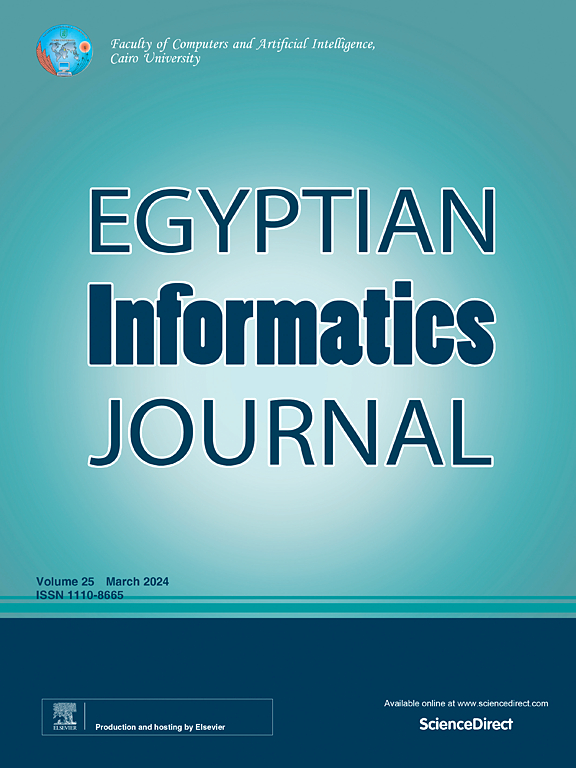An efficient deep learning system for kinship verification based on ConvNext-EfficientNet-VIT feature fusion
IF 4.3
3区 计算机科学
Q1 COMPUTER SCIENCE, ARTIFICIAL INTELLIGENCE
引用次数: 0
Abstract
Kinship verification has emerged as a compelling area of research within computer vision, driven by its critical role in real-world applications, such as forensic investigations and the search for missing persons. Despite recent progress, the task remains challenging due to subtle facial similarities across generations and variations in pose, lighting, and expression. Deep learning techniques have significantly advanced the field. Among them, feature fusion has proven to be a powerful tool for enhancing model performance by integrating complementary characteristics from multiple architectures. This research introduces a new kinship verification framework that harnesses the strengths of ConvNext-Base, EfficientNet-B0, and vision transformer (ViT) through an effective feature fusion strategy. By combining the local texture sensitivity of ConvNeXt, the parameter efficiency of EfficientNet-B0, and the global context modeling capabilities of ViT. The fused representation captures a more holistic and discriminative understanding of facial features relevant to kinship. To the best of the authors’ knowledge, this specific fusion of deep models has not yet been explored for kinship verification. The proposed framework is structured into six stages: image preprocessing, parent/child image pairing, feature extraction, feature normalization, feature fusion, and classification. It was evaluated using two standard benchmark datasets – KinFaceW-I (KinFWI) and KinFaceW-II (KinFWII) – achieving maximum accuracy rates of 84.85% and 91.65%, respectively. These results outperform several state-of-the-art (SOTA) methods and underscore the critical role of multi-model feature fusion in improving the accuracy and robustness of kinship verification systems. This research’s promising findings validate the proposed approach’s effectiveness and highlight the potential of deep feature fusion in addressing complex facial analysis problems.
亲属关系验证已成为计算机视觉中一个引人注目的研究领域,其在现实世界应用中的关键作用,如法医调查和寻找失踪人员,推动了亲属关系验证的发展。尽管最近取得了一些进展,但由于几代人之间微妙的面部相似性以及姿势、光线和表情的差异,这项任务仍然具有挑战性。深度学习技术极大地推动了这一领域的发展。其中,特征融合已被证明是通过集成来自多个体系结构的互补特征来提高模型性能的有力工具。本研究通过一种有效的特征融合策略,引入了一种新的亲属关系验证框架,该框架利用了ConvNext-Base、EfficientNet-B0和vision transformer (ViT)的优势。结合ConvNeXt的局部纹理敏感性、EfficientNet-B0的参数效率和ViT的全局上下文建模能力。融合表征捕获了与亲属关系相关的面部特征的更全面和判别性的理解。据作者所知,这种特定的深度模型融合尚未被用于亲属关系验证。该框架分为六个阶段:图像预处理、父/子图像配对、特征提取、特征归一化、特征融合和分类。使用两个标准基准数据集- KinFaceW-I (KinFWI)和KinFaceW-II (KinFWII)进行评估,分别达到了84.85%和91.65%的最高准确率。这些结果优于几种最先进的(SOTA)方法,并强调了多模型特征融合在提高亲属关系验证系统的准确性和鲁棒性方面的关键作用。本研究的结果验证了所提出方法的有效性,并突出了深度特征融合在解决复杂面部分析问题方面的潜力。
本文章由计算机程序翻译,如有差异,请以英文原文为准。
求助全文
约1分钟内获得全文
求助全文
来源期刊

Egyptian Informatics Journal
Decision Sciences-Management Science and Operations Research
CiteScore
11.10
自引率
1.90%
发文量
59
审稿时长
110 days
期刊介绍:
The Egyptian Informatics Journal is published by the Faculty of Computers and Artificial Intelligence, Cairo University. This Journal provides a forum for the state-of-the-art research and development in the fields of computing, including computer sciences, information technologies, information systems, operations research and decision support. Innovative and not-previously-published work in subjects covered by the Journal is encouraged to be submitted, whether from academic, research or commercial sources.
 求助内容:
求助内容: 应助结果提醒方式:
应助结果提醒方式:


